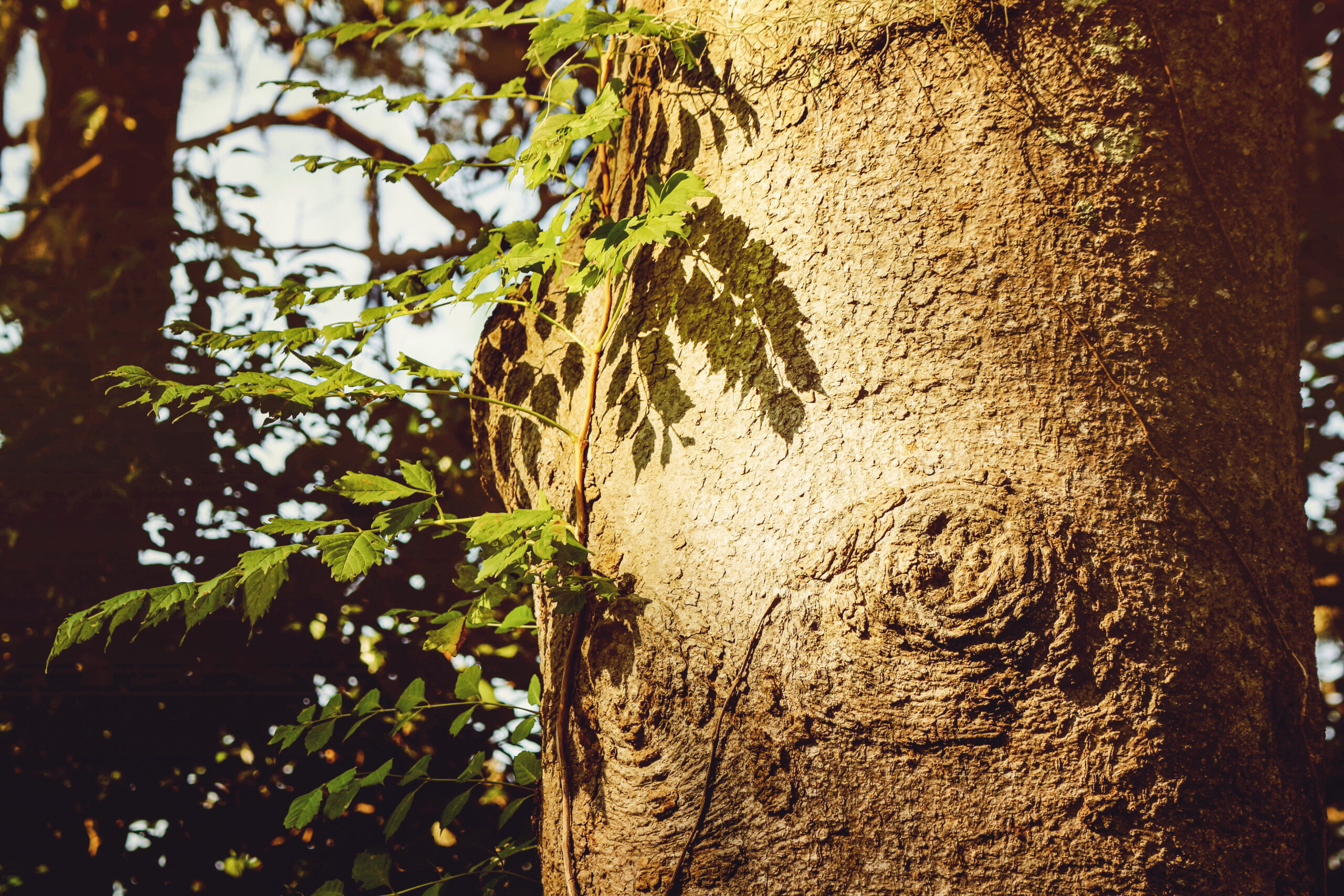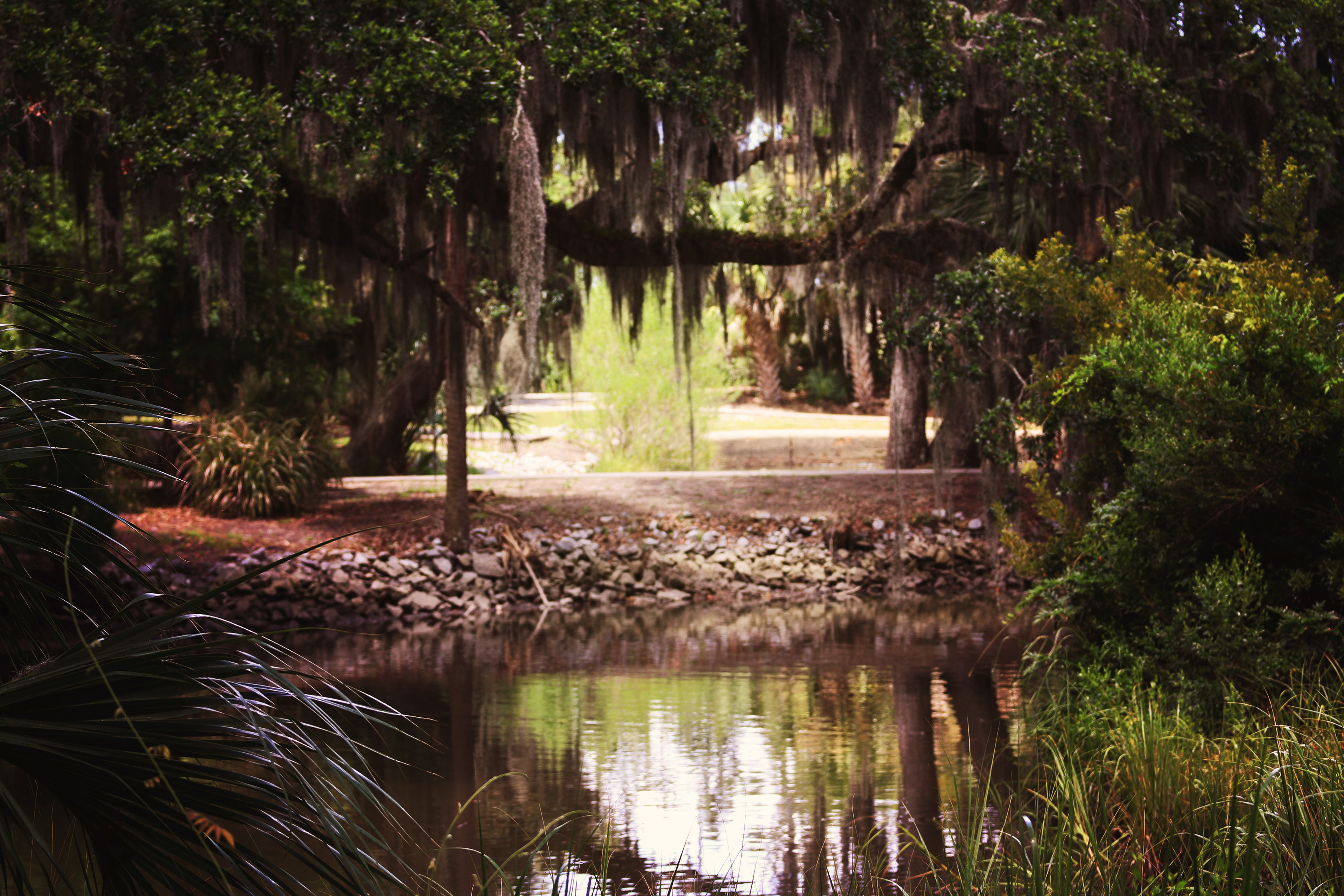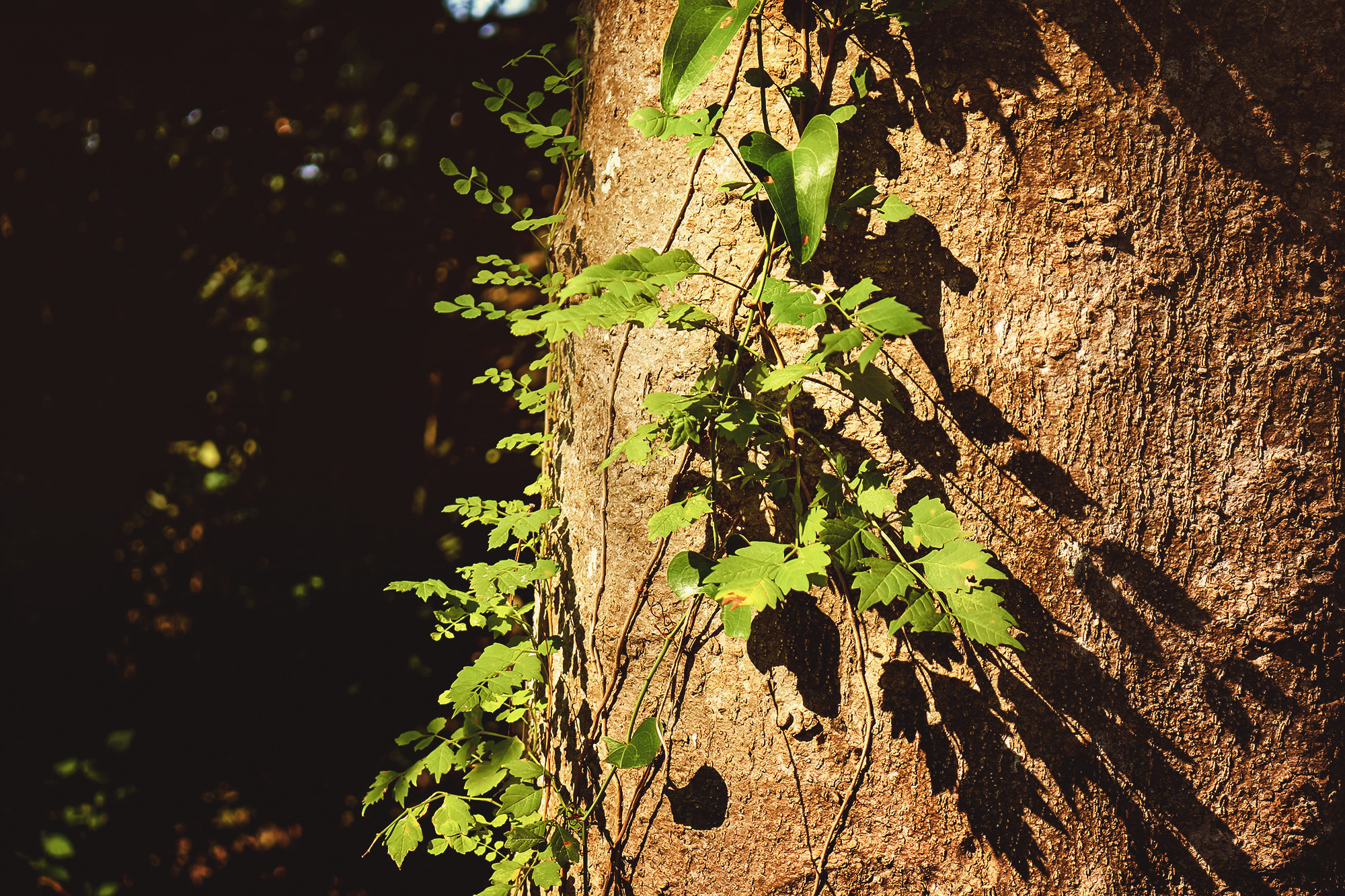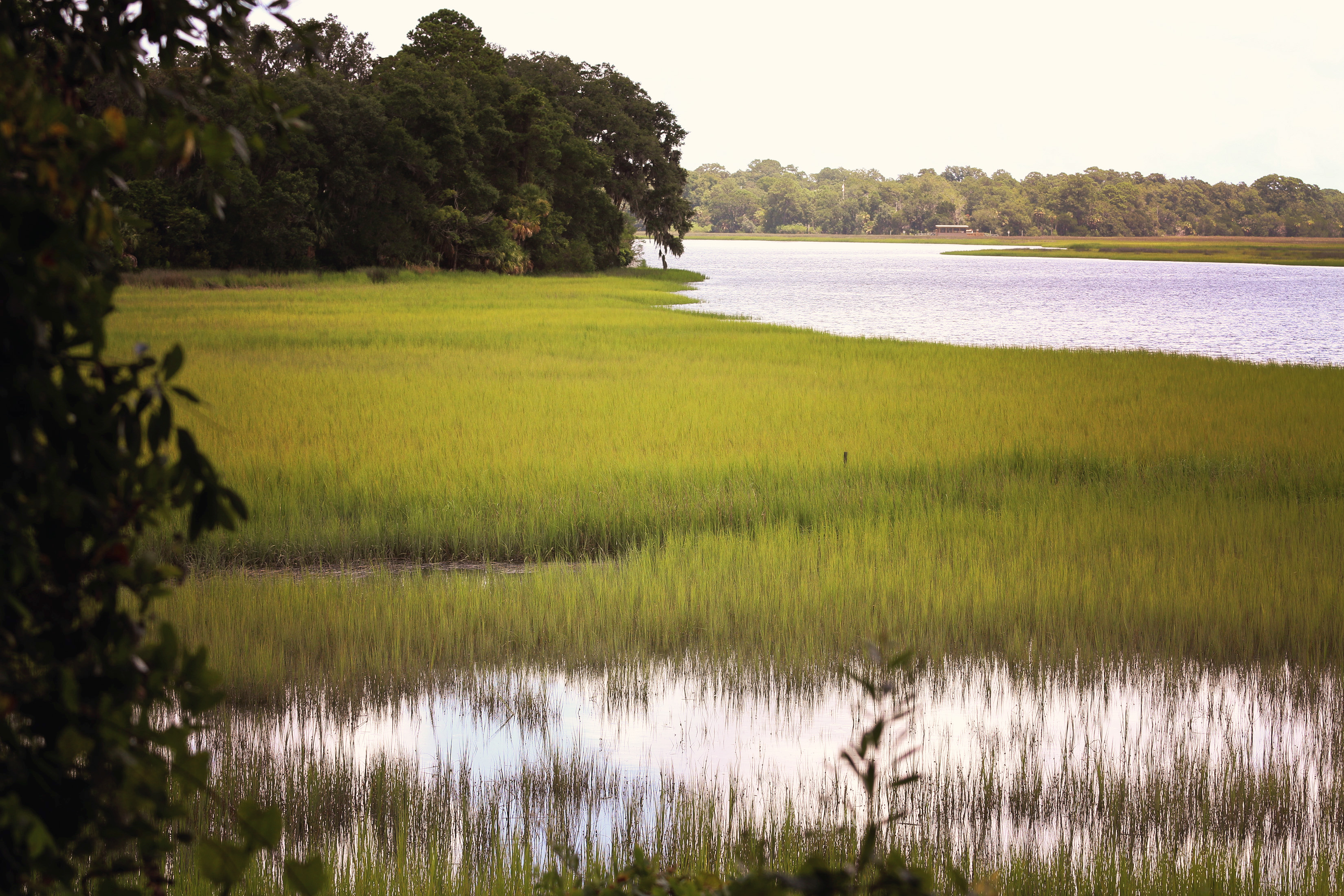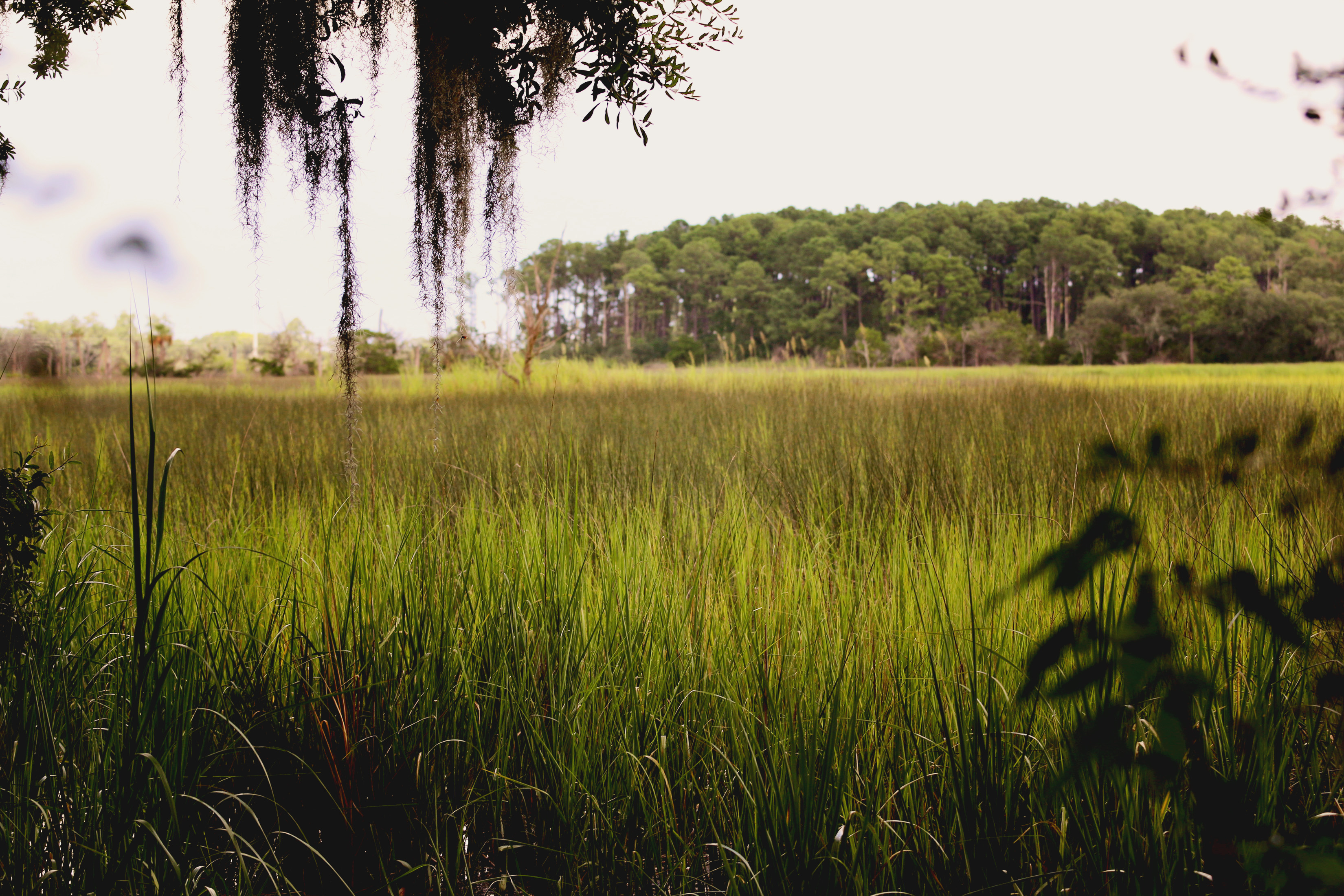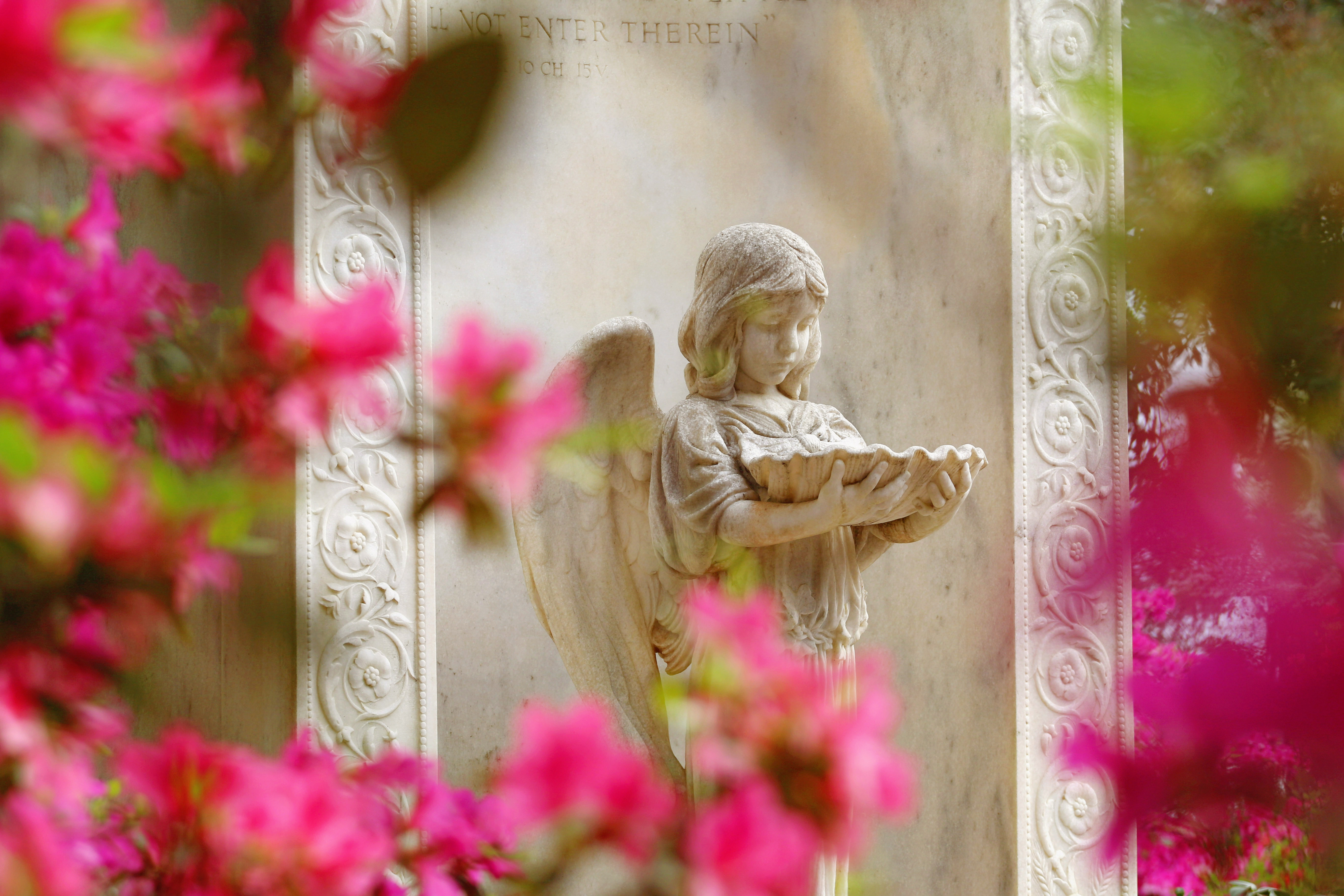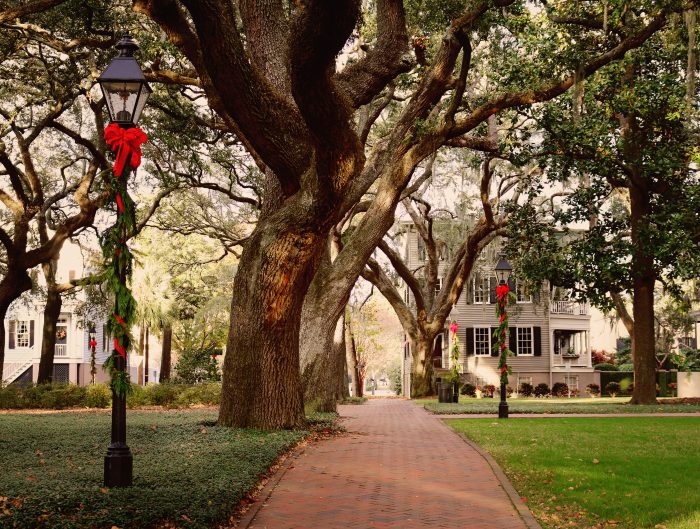“They come, they come from their distant graves,
Some from the ocean’s coral caves,
They come from each gory battle-field
Where liberty’s cause with their blood was sealed;
They have burst the cerements of the tomb
And come to pay in this midnight gloom
Funeral rites to the honored dead,
Who, living, their banners to victory led.”
– On Old Greenwich, by Elizabeth Ann Bowen
Not only is Greenwich Cemetery the final resting place of many beloved Savannah families, it has been filled with the energy, spirit and soul of American heroes long before it was a burial ground and now remains permanently as such. Most recently, Sgt. Kelvin Ansari, a Savannah police officer that served 21 years in the US Army and dedicated most of his life to public service, was laid to rest after a powerful and moving display of American pride and respect trickled through Savannah and the nation from the sheer amount of people in attendance at his funeral service and procession. Kelvin Ansari honorably joins many others who have sacrificed their lives for our country, no doubt serving his heavenly home with the same integrity, bravery, honor and courage. At Greenwich Cemetery, you’ll discover many tokens left behind by loved ones, reflecting this American Spirit.
Like Bonaventure, Greenwich Cemetery was once a plantation, believed by many to be the most beautiful, privately-owned estate in the South. The scenery beside the Wilmington River is captivating in itself, but the history of Greenwich is even more so, painting a picture of farm land, war scenes, a hero’s burial, extravagance, glamorous balls, yachting parties, a 1920 silent film set, a winter retreat, German festivals and shooting contests. The stories only continue to grow with those who now lay resting here. Even Savannah locals miss out on this gem with adjacent Bonaventure often stealing the spotlight, but Greenwich is equally worthy of a visit and just down the road, if you want to take a peek. The mile-long driveway begins at the left of Bonaventure’s main entrance and continues along the edge of Bonaventure, toward the Wilmington River. A brick entrance gate stands in place of the original iron gate, which was moved to Ossabaw Island (more on that later). If you are a fan of Midnight in the Garden of Good and Evil, this is where you will find Danny Hansford’s (1960-1981) grave.
Samuel Bowen became the first owner of the property in 1765. He was an English entrepreneur and farmer who cultivated the first soya beans in North America and introduced tea from China to Georgia. While in China, he claimed to have been held prisoner for four years. When he returned home, he married Jeanie (Jane) Spencer, daughter of Savannah customs collector, William Spencer, and two weeks later, he purchased 450 acres of land in Thunderbolt, which he named “Greenwich.” Bowen grew soya beans to make soy sauce and vermicelli noodles. He also believed the sprouts of his plants had antisorbutic properties that would help the British Royal Navy fight scurvy. In 1766, the Society for the Encouragement of Arts, Manufactures and Commerce awarded him a gold medal and King George III gave him £200 for his research. The following year, he received a patent from the British government for his “new invented method of preparing and making sago, vermicelli and soy from plants growing in America, to be equal in goodness to those made in the East Indies.” Samuel Bowen died in 1777, but his wife remained at Greenwich, and their home was used as headquarters for French officers during the American Revolutionary War. When 377 men were wounded in the Siege of Savannah in 1779, several were taken to Greenwich for care.
Count Casimir Pulaski, a polish nobleman and local hero leading the cavalry forces on the American side, was among the injured taken to Greenwich. Pulaski fought for independence and freedom in both Poland and the United States. Benjamin Franklin was impressed by Pulaski, writing “Count Pulaski of Poland, an officer famous throughout Europe for his bravery and conduct in defense of the liberties of his country against the three great invading powers of Russia, Austria and Prussia…may be highly useful to our service.” He recommended General George Washington accept Pulaski as a volunteer in the Continental Army cavalry and said, “Pulaski was renowned throughout Europe for his courage and bravery in defending the country’s freedom.” After his arrival, Pulaski wrote to Washington: “I came here, where freedom is being defended, to serve it, and to live or die for it.” And so, he became a soldier and military commander during the American Revolution, fighting under General Washington. In the Battle of Brandywine Creek in 1777, he saved Washington’s life. His services to our country took him to Marblehead, MA; Neshaminy Falls, PA; Chadds Ford, PA; Valley Forge, PA; Germantown, PA; Trenton, NJ; Burlington NJ; Cooper’s Ferry, PA; Yorktown, VA; Little Egg Harbor, NJ; Minisink, NY; Charleston, SC; Augusta, GA, and finally, to Savannah, GA. During the Siege of Savannah, he commanded the entire cavalry, both French and American, just two years after his arrival in the states. Sadly, he was mortally wounded in battle and taken to Greenwich where he received treatment in a private bedroom, adjoining members of the Bowen family, but he died on the plantation hours later. Author of Historic and Picturesque Savannah, Adelaide Wilson, writes the following on Count Pulaski’s death:
“A short time after the battle, the wounded man (Pulaski) was placed on a litter and taken to Greenwich, some four miles
distant from Savannah, to be placed on one of the vessels of the French fleet. The French officers had taken quarters previous
to the siege in the mansion of Samuel Bowen, then occupied by Mrs. Samuel Bowen and her daughter, Ann Elizabeth Bowen,
a girl of fourteen years, who not long afterwards married Dr. Samuel Beecroft, a surgeon at that time in the British army.
Mrs. Beecroft witnessed with her mother the arrival, during the day of battle, of a litter containing a wounded man. He was
placed in a room adjoining theirs, with the information that the sufferer was Count Pulaski. He was not the only recipient
of womanly care and attention in that hospitable mansion, for Count d’Estaing (French nobleman who fought alongside
American troops), severely wounded, also became an inmate with others of his brother officers, till he was enabled to join
the fleet. Pulaski lingered but a few hours. Pulaski’s death occurred at night, surrounded by his comrades, exclaiming in
mournful lamentation, ‘Pulaski, the beloved Pulaski is no more!’ Anxious to join the fleet, his comrades determined on an
immediate burial. The servants of the plantation were called into service, and before dawn a solemn procession moved by
the flickering light of torches, over the terraced way, through the garden-walk to a tree-shadowed spot. Here Pulaski was
buried. A majestic palmetto and a glossy-leaved holly marked the hallowed ground. This spot became a Mecca to members
of the Bowen family. Mrs. Beecroft herself kept the pathway clear, indeed, it became a part of the habitual care of the
premises to keep a well-ordered path of about two hundred yards from the house to the orchard-grave.”
Samuel Beecroft, husband of Elizabeth Bowen (daughter of Samuel Bowen) purchased the plantation in 1797. Because Elizabeth was an eye-witness to Pulaski’s burial on the grounds, she kept flowers on his grave until her death in 1816. And she wrote a beautiful poem called “On Old Greenwich,” referencing Pulaski’s burial:
“Say, have you lived within Savannah’s bounds
And heard not of ‘Old Greenwich Home’ and grounds?
Such skeptics are we now of the place
In which an honest ghost dare show his face.
This is the haunted house, this ruined spot
Was on the tablet of my childhood’s memory traced,
Like snatches of some nursery song that’s ne’er forgot,
Which neither joy or grief hath ere effaced.
Yes, it is thus – Old Time will sweep away
The stores of knowledge gained with toil and care,
Yet spare these tales and songs – a feeble ray
Our second childhood’s dreary hour to cheer.
And while I gaze upon those crumbling walls
In “fancy’s glass,” I see the lady, pale and fair,
With robes of ghostly white, in stature tall,
And hear her heavy sighs, and view her flowing hair.
Why doth she here her nightly vigil keep?
Alas! Grim death upon her lips did set
His seal before she told them where to seek
The orphan’s portion – and she lingers yet
Around the hearth where buried lies
The golden ore, — and utters piteous sighs.
Look there, look there! OH, what is that?
A little old man in a gold-laced hat.
With satin knee-breeches, all so fine,
And with silver lace do his vestments shine
At every step he gazes around
And strikes his stick upon the ground.
I almost think I can hear him swear, —
Say, what brought that little man here?
That tangled mass of briers and weeds
Where thistle and night-shade drop their seeds,
Was once a garden of flowers rare,
Cherished and reared by that old man’s care;
“Home to England” that little man sent
His golden guineas he freely spent.
Roses and myrtles came over the sea –
Above all it gladdened his heart to see,
In his foreign home, fair England’s pride,
And his “box” he loved more than his bride.
Can you wonder then at his musty tone
When all his box is stolen and gone?
He mutters and curses and turns him about
And wishes each rascal had his gout.
‘Tis here the unearthly sentinel with measured tread
And folded arms, night after night is seen.
This guard to keep over the hero’s head
Who still reposes ‘neath this verdant green.
Unknown to all,
Save those who laid him in his lonely bed.
And now the midnight’s balmy breeze is filled
With a sweet, wild and plaintive strain,
That mournful bugle-note, with pity thrilled
The ear, and see, appears a visionary train!
They come, they come from their distant graves,
Some from the ocean’s coral caves,
They come from each gory battle-field
Where liberty’s cause with their blood was sealed;
They have burst the cerements of the tomb
And come to pay in this midnight gloom
Funeral rites to the honored dead,
Who, living, their banners to victory led.”
If you are interested in reading more about Pulaski, check out this post by Edward Pinkowski.
In 1874, Greenwich became a German Rifle Club. The Savannah Schutzen Gesellschaft purchased the land from Captain F.C. Threadcraft with the intent of turning it into a club and park. The club was open to non-German Americans to help cover the costs. A ballroom, bowling alley, shooting house and barroom were added, and German rifle clubs from other cities would travel from far to visit. In 1887, the club closed, and Greenwich Park Association was formed to turn Greenwich into a country club and park.
Ten years later, Spencer P. Shotter, Director of Greenwich Park Association, purchased the property and named it Greenwich Place in 1897. He was a 42-year-old multi-millionaire turpentine magnate, and he was chairman of American Naval Stores. He now rests in Bonaventure, and one of his daughters, Elizabeth Wallace Shotter, lies in the famous Lawton plot by “Heaven’s Gate.” Shotter hired prominent Beaux Art architects, Carrère and Hastings, to build a 3-story, 40-room, brick and marble mansion that many referred to as Savannah’s own “Biltmore House.” Carrère and Hastings were known for designing prominent structures, such as the New York Public Library, Metropolitan Opera House (razed) interiors and the Manhattan Bridge.
By now, Greenwich Place had transformed into a luxurious showplace of the southeast, as the sheer grandness and beauty of both the home and gardens, located on 100 acres, were romanticized and admired across the nation. The mansion had double colonnades, 28 columns total on all three sides, each measuring 28 inches in diameter and more than 20 feet tall. The interior consisted of a ballroom, library, billiards room, reception room, drawing room, music room, butler’s pantry, refrigeration pantry, 12 master bedrooms and 10 baths! Outside, there were stables and gardens, a dairy farm, a 200 ft-long greenhouse, a garage that could accommodate six cars, a lodge at the gates, a cottage for chauffeurs, quarters for servants and a bath and pool house, located above a yacht dock. Hard to believe all of this belonged to a single family. It was the 2nd largest private home in the United States.
In 1917, Dr. Henry N. Torrey and his family purchased the property for the purpose of wintering away from their home in Detroit. The sale of Greenwich was broadcasted throughout the country. Torrey was an ambidextrous surgeon who retired from his work after witnessing the horrific tragedies of WWI. His wife was the daughter of the founder of Pittsburgh Plate Glass, a manufacturer of skyscraper windows, which brought them significant wealth. They hired a staff of 18 people to work for them at Greenwich. Can you imagine? During the Torrey’s ownership, Stolen Moments (1920) was filmed here. It included actor Rudolph Valentino‘s last villain role, before he reached international stardom. Producer of Gone With The Wind, David O. Selznick, edited the film. Just a year later, Valentino starred in Camille, which was the first film to premier at Savannah’s Lucas Theater. This theater was also the location of Midnight In the Garden Of Good And Evil’s wrap party. But I digress…
At 3:00 AM, January 27, 1923, a fire broke out on the second floor’s sewing room. Everything inside the home burned to the ground; everything was lost, which amounted to the equivalent of 5 million dollars today. Fortunately, the family escaped. They lived on their yacht named Tamarack for a few months, before returning home to Detroit. Shortly after, they bought a Georgia barrier island, Ossabaw, which was typical for wealthy families of the era. The Carnegies owned property on Cumberland, The Reynolds owned Sapelo, and several industrialists owned Jekyll Island. For some time, all that remained of the Greenwich mansion were architectural ruins that have since been removed. You can view scenes of the old Greenwich plantation through several vintage photographs and films: Under Southern Skies, Stolen Moments and Of Mice and Men. A lovely video can be seen here.
The original fountain at Greenwich still exists and marks the location where the mansion once stood. The butterfly pond is more beautiful than ever and feels more like a lagoon where an occasional alligator makes an appearance. Remnants of the 80-foot dock still protrude from the Wilmington River. As you walk around the property, imagine what previously surrounded the land before you. Can you picture the extravagant architecture, roman statuary, guests strolling the gardens and family members bathing by the dock? With barely a trace of the old Greenwich home surviving today, you really have to transport yourself to a different world. It was someone’s front yard, someone’s escape into nature, someone’s favorite place to take their yacht out on the water…If only someone could tell the stories of every day family life here. What was life like in the home? Where else did the Torrey family visit in Savannah? Who else might have visited their estate?
Both the home and surrounding gardens used to be full of art. A marble Eve statue by Hiram Powers stood inside the main hall. Two, 7-foot sphinx statues from 300 BC stood in the garden. Other sculptures were taken from the ruins of the ancient city of Pompeii and some were carved in the second and third centuries after Christ. Two Janus Statues, symbols of the Roman God of Transitions, guarded the entrance to the garden. These sculptures had two faces: one looking forward, the other looking backward, which is symbolic of beginnings and endings and seems very fitting for Greenwich, itself. While the Janus Statues are no longer present, the fountain exists as a symbol of the past in a world that has replaced the old. It is also a symbol of rebirth — that all things will be made new. This is especially true of the countless lives resting in Greenwich Cemetery today.
Ownership changed several times after the fire, before it was established by the City of Savannah as the “Greenwich Addition” to Bonaventure in 1933, or simply, Greenwich Cemetery. For having such a layered, diverse and compelling history, it’s hard to fathom it’s only been 250 years since Greenwich was founded. That such momentum could dissolve into such a quiet and still, uncommonly trespassed space. Or that so many lives made Greenwich their final stop on this earth. But it seems meant to be that such history would be eternally protected by a hallowed ground, guarded by angels.
Today, unique sculptures, poetic engravings and many forms of nature and wildlife can be seen in this tucked-away, 65-acre corner of the bluff. Several live oaks are certainly well over two hundred years old and have witnessed important events and lives in American History, although I believe these trees have not been documented. Count Pulaski is no longer buried on the property, as his remains were reinterred next to the Pulaski Monument in Monterey Square. The statuary was removed and stored at Laurel Grove Cemetery for 30 years. Prior to that, I heard the sculpture collection was so famous, Al Capone tried to purchase it while being imprisoned at Alcatraz. In 1965, the Telfair Academy of Arts and Sciences took the collection under their care, and one bust went to the Owens-Thomas House.
Finally, fans of Midnight in the Garden of Good and Evil will find Danny Hansford (1960-1981) and his mother, Emily A. Bannister, at Section 8, Row G, Lot 6. Please, please take time to read this article, published by his mother’s creative writing teacher, Sarah Anne Shope. Ms. Shope writes: “During the time Emily was in my class I gained a deep sense of what it might be like to raise a child and then lose him in such a bizarre manner. The loss of a child is not a statistic or a newspaper headline; it’s a life-shaking trauma that demands support from any direction. Emily had support from her other three children, employers, and some friends, but not from the legal system or society in general. The media focused on Williams and his dilemma. That fact has become ingrained in the mountain of lore of this country, as it was infamously publicized in print and fictionalized on the big screen. There was hardly mention of an Emily Bannister in Berendt’s book, and in the movie there was no haunting camera shot of the dead boy’s mother sitting in the dim corridors of that courthouse. Only from the grip of Emily’s voice could a reader experience the depth of such loss and the emptiness that engulfed it. Yet, her story is far more than that tragedy; it includes the beauty and humor of life amid adversity.” I pray her manuscript gets published one day.
Now fast forward in time.
One of the Torrey’s children who jumped out of a 2nd floor window to save her life from the fire in 1923, Eleanor Torrey “Sandy” West, turned the island of Ossabaw into a lifelong love affair, before parting ways in 2016. She is a living legend and a remarkable 106 years old. A beautiful article on her life story, “Keeper of the Island,” is worth the read. Jane Fishman also wrote a book on her called “The Woman Who Saved An Island.”
Sandy also wrote children’s books and painted, and in 1961, she and her husband, Clifford West, founded the Ossabaw Foundation, an artist’s colony for painters, scientists, writers, historians, mathematicians, linguists, sculptors and other intellectuals from around the world. In Sandy’s words: “I didn’t care what they did here, I cared what the island did to them,” she told The Atlanta Journal-Constitution in 2000. “I wanted to share (Ossabaw), I guess, because of my guilt of having such a wonderful place.” We will visit Ossabaw soon.
Finally, I will leave you with this. I set out to explore Greenwich, after a hurricane had passed just recently, thinking I might find some acorns, even though it was too early in the season for them to fall. It was a beautiful morning, and though I had walked all over Greenwich, I did not find acorns, which was okay because I took some nice photos. As I was walking through the gate of Greenwich on my way out, I saw a tree in Forest Lawn that caught my attention. I walked over to this tree to take photos of the vines crawling up the side, and as I was doing so, I heard something hitting the ground repeatedly behind me. Thinking this was odd and questioning what it was, I kept my focus on the photograph I was taking and waited to turn around. When I looked behind me, I realized it was acorns falling like rain. And when I looked up, I was surprised to find hardly a canopy above me. The tree was old and decaying, and most of its branches were gone. Yet, acorns were falling all around.










